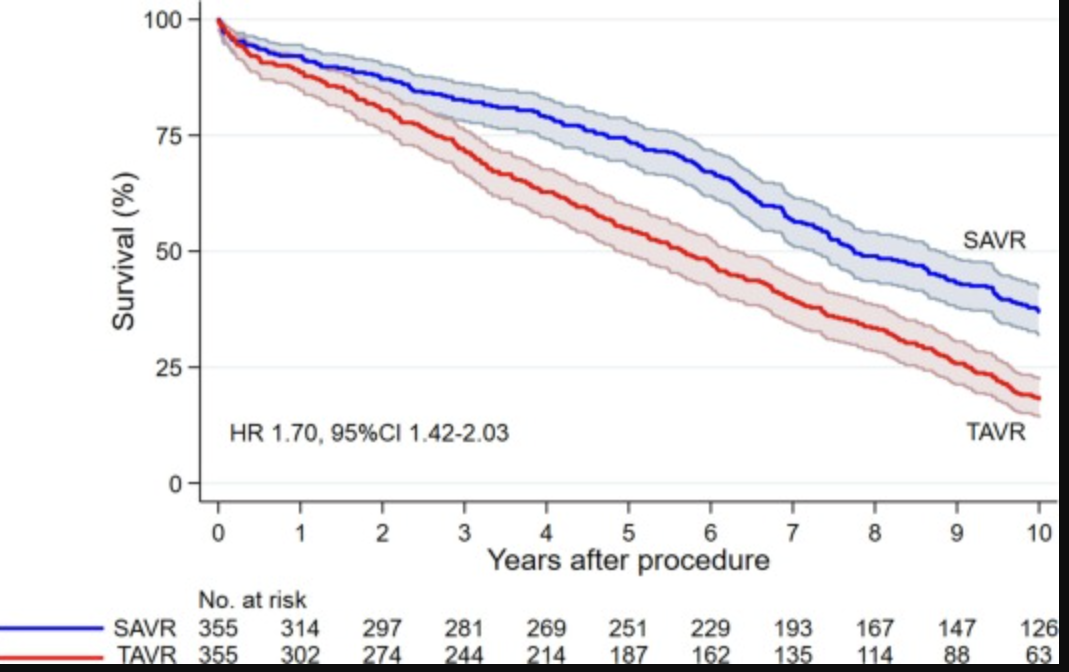Survival After Surgical Aortic Valve Replacement May Be Better Than TAVI?

Understanding Heart Valve Treatments: A Decade-Long Study Comparison
If you or a loved one has been diagnosed with severe aortic stenosis, you may have heard about two treatment options: surgical aortic valve replacement (SAVR) and transcatheter aortic valve replacement (TAVR). Today, we’ll delve into a significant study that compared these two procedures over a 10-year period, providing valuable insights for patients considering their options.
The OBSERVANT Study: A Long-Term Look at Heart Valve Treatments
The OBSERVANT study, which stands for “Observational Study of Effectiveness of SAVR-TAVI Procedures for Severe Aortic Stenosis Treatment”, is a comprehensive research project that followed patients who underwent either SAVR or TAVR for aortic stenosis. This study is particularly noteworthy because it focused on low-risk patients and tracked their outcomes for an entire decade.
What is Aortic Stenosis?
Before we explore the study results, let’s briefly recap what aortic stenosis is. It’s a condition where the aortic valve in your heart narrows, making it more challenging for blood to flow from your heart to the rest of your body. This can lead to symptoms like chest pain, shortness of breath, and fainting.
Treatment Options: SAVR vs. TAVR
There are two primary ways to treat severe aortic stenosis:
- Surgical Aortic Valve Replacement (SAVR): This is the traditional open-heart surgery where the chest is opened to replace the diseased valve.
- Transcatheter Aortic Valve Replacement (TAVR): This is a newer, less invasive procedure where the valve is replaced using a catheter, usually inserted through a small incision in the leg.
Key Findings of the OBSERVANT Study
Survival Rates
The primary focus of the study was to compare the survival rates between SAVR and TAVR patients over a 10-year period. Surprisingly, the results showed that low-risk patients who underwent TAVR with early-generation devices had lower survival rates compared to those who had SAVR.
This finding is particularly important because it challenges the notion that TAVR, being less invasive, would automatically lead to better long-term outcomes for all patients. It suggests that for low-risk patients, the traditional surgical approach might still have some advantages in terms of longevity.
Repeat Procedures
Another crucial aspect the study examined was the need for repeat procedures on the aortic valve. The researchers found that after 10 years, 2.6% of SAVR patients needed a repeat procedure, compared to 1.1% of TAVR patients. While this difference wasn’t statistically significant, it suggests that TAVR valves might be slightly more durable in the long run.
Interpreting the Results
These findings raise some important points for patients and healthcare providers to consider:
- Long-term perspective: While TAVR has shown excellent short-term results in many studies, this 10-year data suggests we need to be cautious about assuming those benefits will automatically extend over a longer period, especially for low-risk patients.
- Evolving technology: It’s crucial to note that this study used early-generation TAVR devices. The field of transcatheter valves has advanced significantly since then, and newer devices might yield different long-term results.
- Personalised decision-making: The study underscores the importance of tailoring treatment decisions to each patient’s specific situation, considering factors like age, overall health, and personal preferences.
Conclusion
The 10-year results of the OBSERVANT study offer important insights into the long-term outcomes of SAVR and TAVR for low-risk patients with aortic stenosis. Whilst the study found a survival advantage for SAVR, it’s important to remember that treatment decisions should be individualised.
Both SAVR and TAVR remain excellent options for treating aortic stenosis, each with its own set of benefits and considerations. As a patient, the best approach is to have an open and thorough discussion with your healthcare team about your specific situation, preferences, and treatment goals.
References
- The OBSERVANT study:
Tamburino, C., et al. (2023). Ten-year outcomes after transcatheter or surgical aortic valve replacement in low-risk patients: The OBSERVANT study. European Heart Journal, 44(47), 4595-4604. - The NOTION trial:
Søndergaard, L., et al. (2022). Ten-Year Outcomes From the Nordic Aortic Valve Intervention (NOTION) Trial. Circulation, 145(13), 1011-1020. - The PARTNER 3 trial:
Mack, M. J., et al. (2023). Five-Year Outcomes of Transcatheter or Surgical Aortic-Valve Replacement. New England Journal of Medicine, 388(9), 795-807. - The Evolut Low Risk trial:
Popma, J. J., et al. (2022). Four-Year Outcomes in Low-Risk Patients With Self-Expanding Transcatheter Aortic Valve Replacement. JACC: Cardiovascular Interventions, 15(15), 1533-1544.

